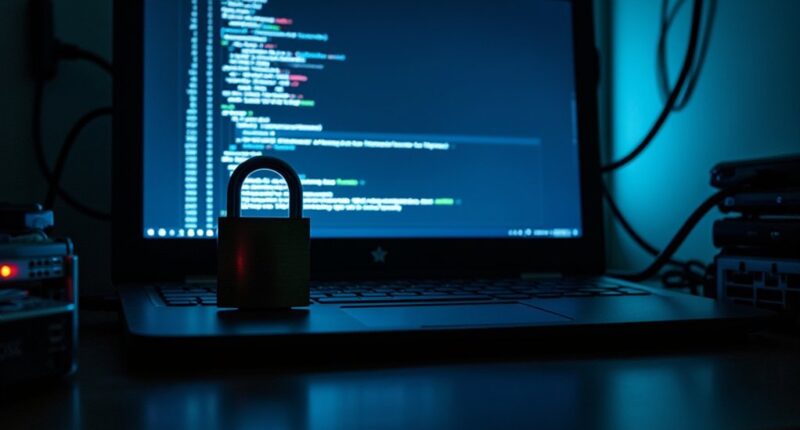Several cybersecurity experts are sounding alarms about Ebyte Ransomware, a Go-based threat targeting Windows systems that’s causing headaches for unprepared users. Inspired by the infamous Prince Ransomware, this nasty piece of work employs ChaCha20 and ECIES encryption to lock down files, slapping the not-so-subtle “.EByteLocker” extension on everything it touches. The kicker? It’s publicly available on GitHub. For “educational purposes.” Right.
The malware works methodically, encrypting user data while carefully avoiding critical system files. Victims get the full ransomware experience – modified wallpaper, ransom demands, and a unique locker ID for tracking. It’s like having a digital kidnapper with excellent organizational skills. The malware establishes communication with command and control infrastructure, ensuring attackers maintain their grip on compromised systems. The developers have included a web-based control panel for managing infected targets.
Getting infected isn’t complicated. Phishing emails, compromised RDP access, unpatched software – the usual suspects. Fall for a fake installer or pirated software download? Congratulations, you’ve just invited Ebyte to dinner. And it’s hungry. Similar to infostealer trojans, which saw a staggering 643% increase in infections over the past three years, Ebyte typically enters systems through social engineering tactics.
The encryption process is thorough. Ebyte scans all drives recursively, using ChaCha20 for file encryption. The ChaCha20 key and nonce get encrypted with ECIES, then prepended to each file. It even uses a clever 1-byte encrypted, 2-bytes unencrypted pattern. Not exactly amateur hour.
Victims find a “Decryption Instructions.txt” note, directing them to contact attackers via email with their unique victim ID. Pay in cryptocurrency or kiss your data goodbye. Classic.
The fallout? Inaccessible data, business disruptions, and potential data loss if backups aren’t available. There’s also the fun possibility of attackers exfiltrating sensitive information. The ransomware’s clever design ensures system stability while rendering user files completely inaccessible. Double extortion, anyone?
Security professionals recommend implementing zero-trust security, enhancing threat intelligence, and developing incident response plans. Regular backups and security training help too. But let’s be honest – once Ebyte has your files, you’re already in a world of trouble. Prevention beats scrambling for bitcoin any day.









